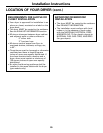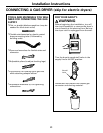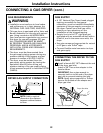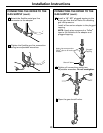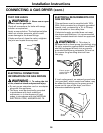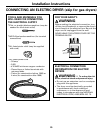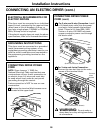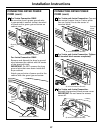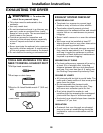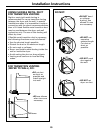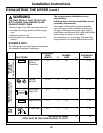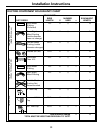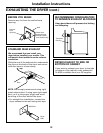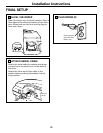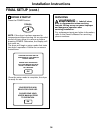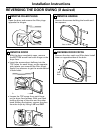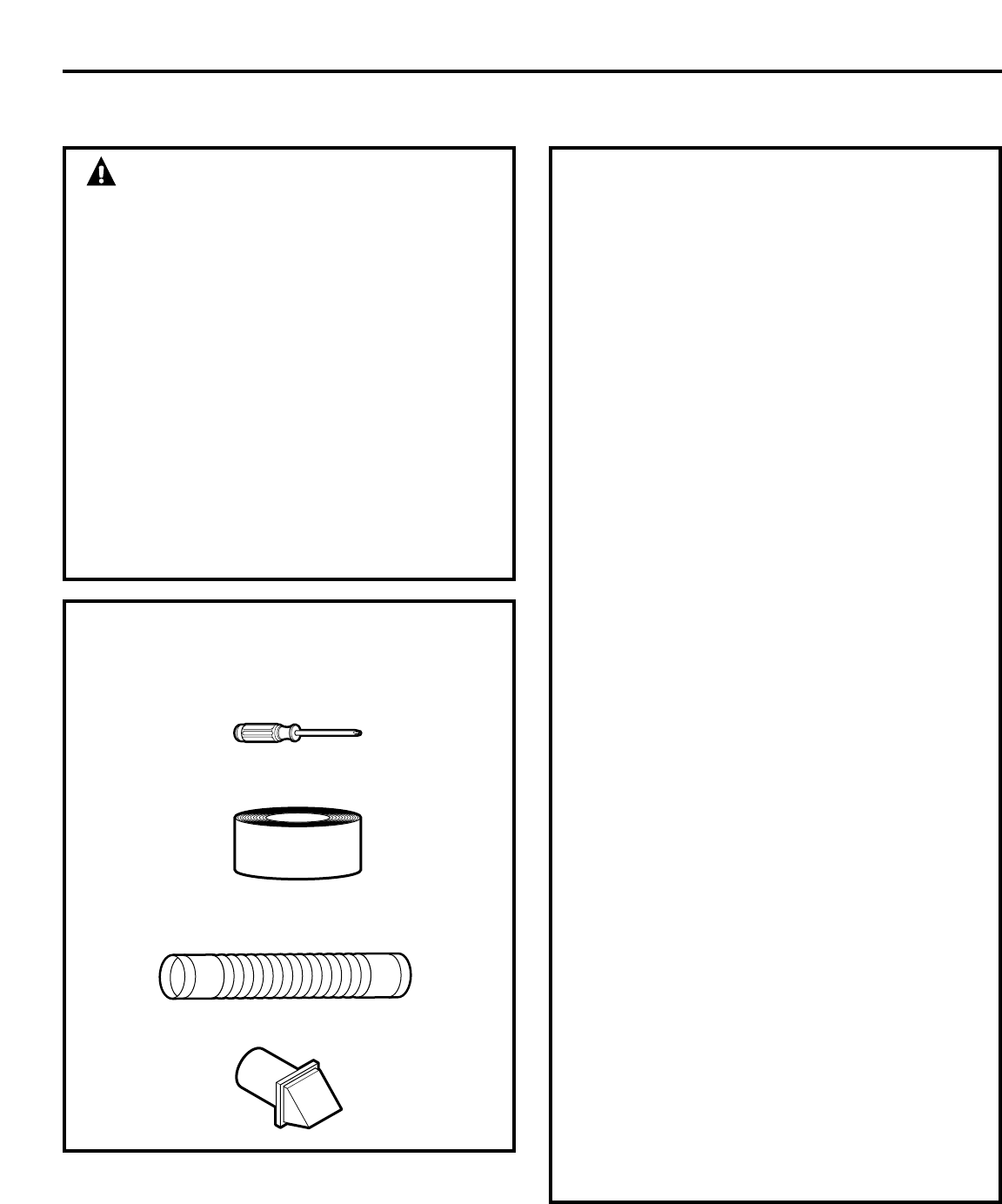
Installation Instructions
28
EXHAUSTING THE DRYER
WARNING – To reduce the
risk of fire or personal injury:
• This dryer must be exhausted to the
outdoors.
• Use only metal duct.
• Do not terminate exhaust in a chimney, any
gas vent, under an enclosed floor (crawl
space) or into an attic. The accumulated lint
could create a fire hazard.
• Provide an access for inspection and
cleaning of the exhaust system, especially
at turns. Inspect and clean at least once
a year.
• Never terminate the exhaust into a common
duct with a kitchen exhaust. A combination
of lint and grease could create a fire hazard.
• Do not obstruct incoming or exhausted air.
TOOLS AND MATERIALS YOU WILL
NEED TO INSTALL EXHAUST DUCT
❒ Phillips-head screwdriver
❒ Duct tape or duct clamp
❒ Rigid or UL-listed flexible metal 4” (10.2 cm)
duct
❒ Vent hood
EXHAUST SYSTEM CHECKLIST
HOOD OR WALL CAP
• Terminate in a manner to prevent back
drafts or entry of birds or other wildlife.
• Termination should present minimal
resistance to the exhaust airflow and should
require little or no maintenance to prevent
clogging.
• Never install a screen in or over the exhaust
duct.
• Wall caps must be installed at least 12”
above ground level or any other obstruction
with the opening pointed down.
• If roof vents or louvered plenums are used,
they must be equivalent to a 4” dampened
wall cap in regard to resistance to airflow,
prevention of back drafts and maintenance
required to prevent clogging.
SEPARATION OF TURNS
• For best performance, separate all turns by
at least 4 ft. of straight duct, including
distance between last turn and dampened
wall cap. For turns less than 4 ft. apart, see
the Ducting Component Equivalency Chart.
SEALING OF JOINTS
• All joints should be tight to avoid leaks. The
male end of each section of duct must point
away from the dryer.
• Do not assemble the ductwork with
fasteners that extend into the duct. They
will serve as a collection point for lint.
• Duct joints should be made air- and
moisture-tight by wrapping the overlapped
joints with duct tape or aluminum tape.
• Horizontal runs should slope down towards
outdoors 1/4” per foot.
INSULATION
• Ductwork that runs through an unheated
area or is near air conditioning should be
insulated to reduce condensation and lint
buildup.



